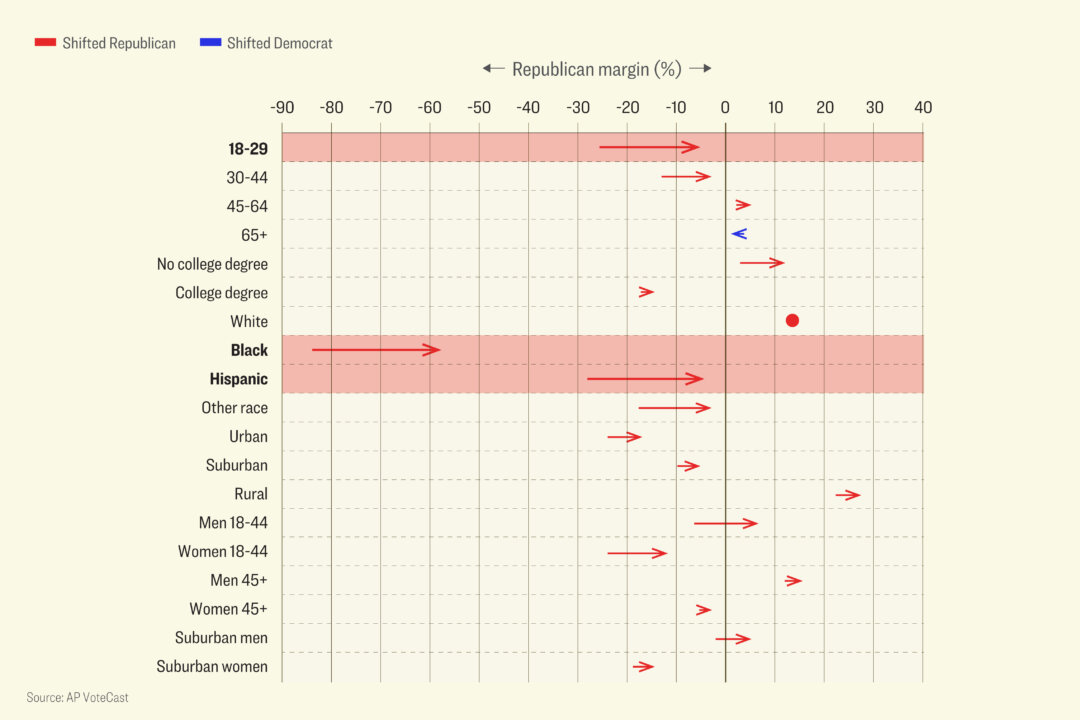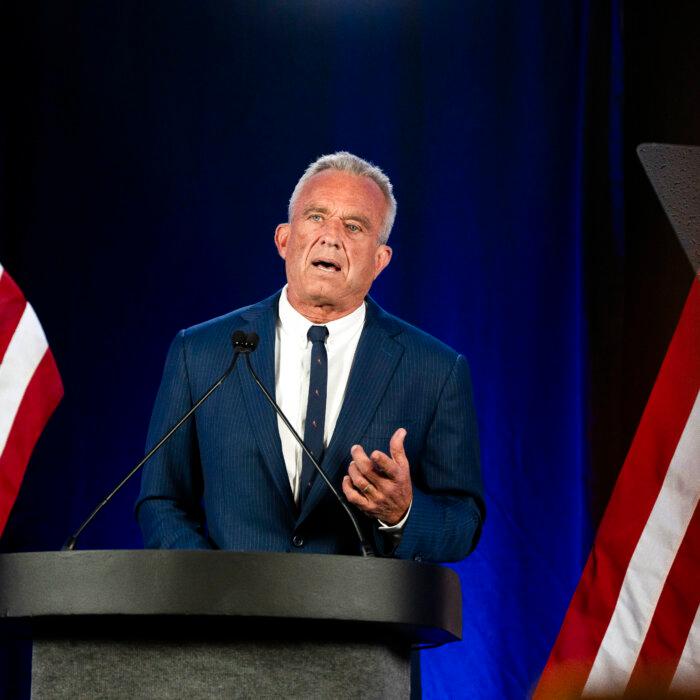President-elect Donald Trump has won greater support from nearly all demographic groups, but perhaps the most consequential one has been Gen Z voters aged 18 to 29.
Although the majority of young voters still turned out for his Democratic opponent, Vice President Kamala Harris, Trump managed to greatly increase his success with this stratum, garnering 46 percent of its vote compared with 36 percent in 2020, according to AP VoteCast, a national poll conducted by the National Opinion Research Center before and on election day.
Trump also nearly doubled his support among black voters, receiving 15 percent of the votes compared with 8 percent in 2020, and improved with Hispanic voters (41 percent versus 35 percent). Those groups represented only 3 percent and 8 percent of the total votes he received, respectively, while the young voters made up 15 percent of his votes.
Harris tried to appeal to young voters, including by granting an interview to the “Call Her Daddy” podcast, which focuses on young women’s issues, including relationships and advice. But her approach didn’t appear to resonate enough.
What galvanized the electorate writ large was the economy. Young people haven’t been spared the throes of inflation, watching their income diminish in real terms since the Biden–Harris administration took office.
According to AP VoteCast, almost two in five voters identified the economy as the country’s most important issue. The proportion was slightly higher in the battleground states of Georgia, Michigan, Pennsylvania, and Nevada.
Economic concerns lack an easy comparison to 2020, when voters were largely preoccupied with the COVID-19 pandemic and its associated restrictions.
This year, Trump hammered the economic argument, repeatedly raising his bid with proposals of no taxes on tips, no taxes on overtime, and no taxes on social security. While the latter issue may not concern young voters, the first two easily could have. A typical tipped worker in the hospitality industry is younger than 30 years old.
He also promised to bring down consumer prices by increasing energy production.

Harris’s economic proposals, such as banning grocery price gouging and offering $25,000 down payments for new home buyers, don’t appear to have had sufficient appeal. With the median home price at more than $420,000 (up by 24 percent since President Joe Biden took office) and the average mortgage rate at 6.7 percent (up from 2.7 percent), it’s likely young people find themselves separated from their first home by much more than $25,000.
Across age groups, voters saw Trump as more able to handle the economy by a 4- to 9-point margin.
On the other hand, where Trump didn’t see any gains was among college-educated voters, among whom he received 41 percent of the vote both now and in 2020. He also flatlined among women older than 45, getting 47 percent of their votes. He improved marginally among suburban women, garnering 41 percent of their votes compared with 40 percent in 2020.
Among women aged 18 to 44, however, Trump rose by 6 points, from 37 percent in 2020 to 43 percent this election. That might indicate that abortion access, a signature issue of Harris’s campaign, wasn’t quite the seller she needed to win.

Only 11 percent of voters marked abortion as the country’s most important issue.
Exit polls also seemed to reflect that Trump’s pledge to leave abortion to the states and stop short of backing national abortion restrictions benefited him on balance. He not only gained ground among people who think abortion should be illegal in all or most cases, but he also greatly improved his performance among those who think abortion should be legal in most cases, garnering 49 percent of their votes compared with 30 percent four years ago, according to the NEP Exit Poll, conducted by Edison Research.
Among those who believed that abortion should be legal in all cases, he did 8 points worse than in 2020.
He triumphed among new voters, 56 percent of whom cast their ballots for him, up from 32 percent four years ago.
In the lower middle class, making $30,000 to $50,000 per year, he rose by 10 points but sank by 11 points among those making $100,000 to $200,000.
Among Hispanics, he improved the most with those aged 18 to 29, those aged 45 to 64, and with men. Among all three groups, he soared 19 points above 2020. Among men, he claimed a 55 percent majority.
Also notable were 11-point improvements with fathers and veterans, where he grasped 60 percent and 65 percent majorities, respectively.






